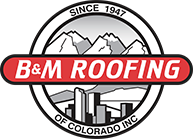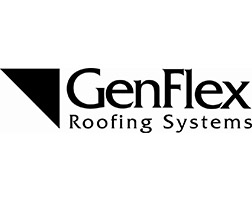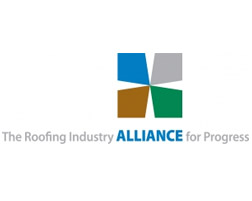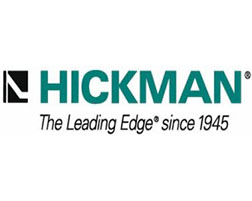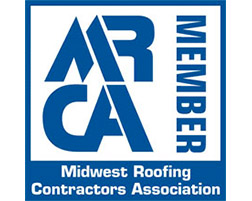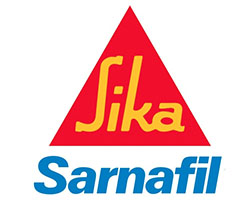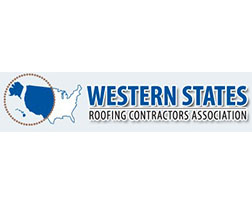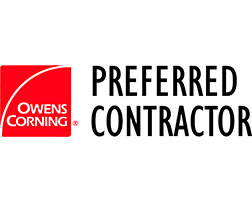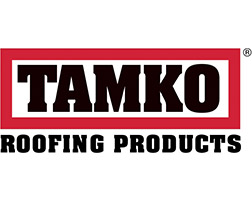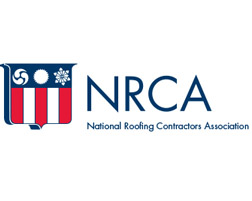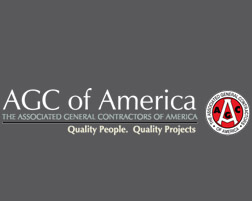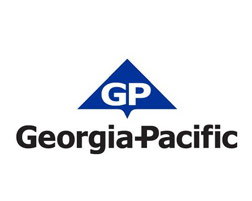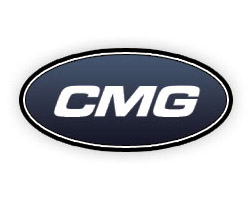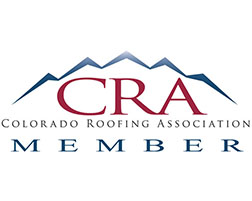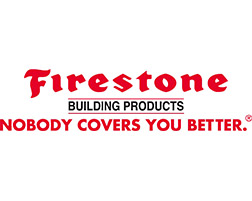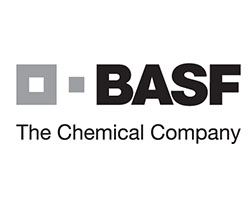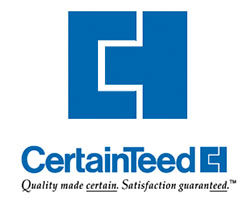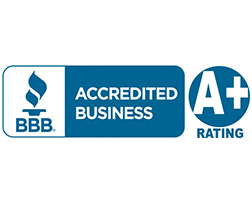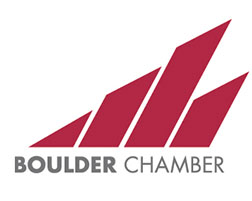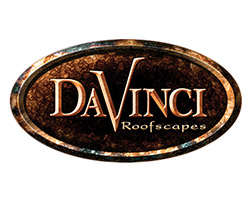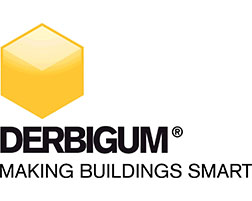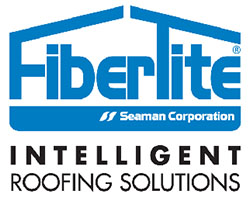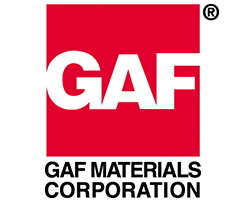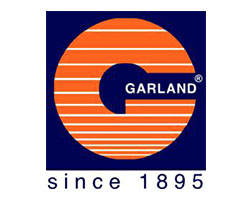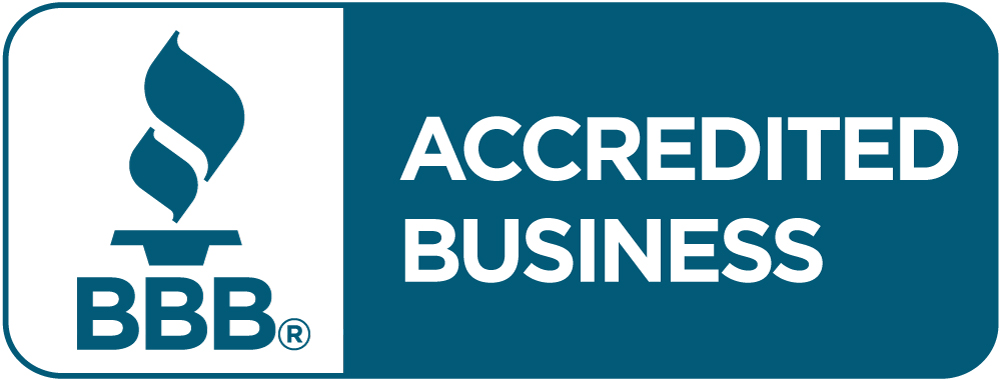Roof Replacement Process
A roof replacement is a significant home improvement project that requires careful planning and execution. Whether due to age, damage, or a desire to enhance your home’s esthetic appeal and functionality, understanding the roof replacement process is crucial.
This article will provide you with valuable insights into the steps involved in roof replacement, and answer common questions about the process, materials, insurance, and more.

The Roof Replacement Process
The roof replacement process typically follows a series of steps to ensure a successful and long-lasting outcome. While each roofing company may slightly vary its processes, the core steps remain consistent.
Sometimes, if the existing roof is in relatively good condition and local building codes permit, it may be possible to install new roofing materials directly over the existing roof. This approach can save time and money, but it’s essential to consider factors like weight restrictions and the condition of the underlying structure.
Here is an overview of the most common roof replacement process:
Inspection and Assessment
A professional roofer assesses the condition of the existing roof, identifying any signs of damage or underlying issues. They examine the roof’s structure, decking, insulation, and ventilation systems to ensure optimal condition.
Obtaining Permits
Depending on your local regulations, permits may be required before commencing a roof replacement project. Your roofing contractor will assist in obtaining the necessary permits to ensure compliance with building codes.
Material Selection
Choose the roofing materials that best suit your needs, preferences, and budget.
Removal of Existing Roof
The old roofing materials are carefully removed, ensuring the underlying structure remains intact. The removal process may involve stripping off shingles, underlayment, flashing, and other components.
Repair and Preparation
Damaged or rotted sections of the roof decking are replaced. The roof surface is inspected for any necessary repairs or reinforcements before the installation of new materials.
Installation
The new roofing materials are installed according to the manufacturer’s guidelines and industry best practices. This includes laying underlayment, applying shingles or other chosen materials, and installing flashing and ventilation systems.
Cleanup and Inspection
The job site is thoroughly cleaned of debris, ensuring the surrounding areas are safe and tidy. A final inspection is conducted to verify the quality of the installation and address any remaining concerns.
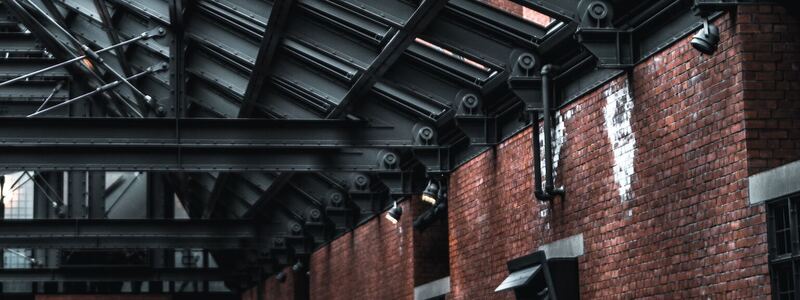
Common Questions About Roof Replacement
- Should I stay home during the roof replacement?
While you don’t need to stay home during the entire roof replacement process, it is advisable to be present during critical stages such as the initial inspection, material selection, and final inspection. This allows you to stay informed, address any concerns, and ensure that the project progresses smoothly.
- Do roofers need to come inside the house?
Roofers generally do not need to enter the interior of your home during a roof replacement unless some specific requirements or issues need to be addressed. Most of the work is conducted externally, focusing on the roof structure itself.
- How long does a roof replacement take?
The duration of a roof replacement project varies depending on several factors, including the roof size, weather conditions, and the efficiency of the roofing crew.
A roof replacement can take a few days to a couple of weeks. Your roofing contractor will provide a more accurate timeline based on your project.
Contact our experienced team at B&M Roofing today for a free estimate!
Types of Roof Pitches and Examples
Roof pitch refers to the slope or angle of a roof. Different roof pitches serve specific purposes and are used in various building types. Here are some common types of roof pitches:
Low Slope Roofs
Roof Pitch 2:12 to 4:12
Examples include flat roofs, low-slope metal roofs, and modern architectural designs.
Conventional Slope Roofs
Roof Pitch 4:12 to 9:12
Examples include traditional gable roofs, hip roofs, and shed roofs commonly found in residential homes.
Steeper Slope Roofs
Roof Pitch: 9:12 to 21:12
Examples include Victorian-style roofs, Dutch gable roofs, and French country roofs.
High Slope Roofs
Roof Pitch 21:12 and above
Examples are Gothic-style roofs, Tudor-style roofs, and some barn roofs.
You can use a simple method to determine the pitch or slope of your roof. Find a point on your roof and measure how steep it is. You can figure out the pitch by looking at how much the roof goes up compared to how far it extends horizontally. Another option is to consult a professional roofer who has the tools and knowledge to assess the pitch of your roof.
Commonly Used Roofing Materials
Asphalt Shingles: Most popular roofing material due to affordability, durability, and ease of installation. Available in various styles and colors, providing versatility in design.
Metal Roofing: Offers exceptional durability, longevity, and energy efficiency. Common materials include steel, aluminum, and copper.
Tile Roofing: Provides a classic and elegant look, often seen in Mediterranean or Spanish-style architecture. Materials include clay and concrete tiles, offering durability and resistance to fire and rot.
Slate Roofing: Known for its natural beauty, durability, and longevity. Requires professional installation due to its weight and specialized handling.
Wood Shakes and Shingles: Offers a rustic and charming appearance, commonly used in traditional and historic homes. Requires regular maintenance and may have restrictions in fire-prone areas.
Synthetic Roofing Materials: Engineered to mimic the appearance of natural materials like slate or wood shakes. These are cost-effective alternatives with improved durability and reduced maintenance.

Roofing in Colorado: Aspects to Consider
Roofing in Colorado has some specific characteristics and considerations compared to other states due to the state’s unique climate, geography, and building codes.
Weather Conditions
Colorado experiences a wide range of weather conditions throughout the year, including heavy snowfall, intense sunlight, high winds, and occasional hailstorms. These weather elements can impact the longevity and durability of the roofing materials used.
Due to the high elevation and exposure to sunlight, roofs in Colorado are prone to faster deterioration from UV rays. Choosing roofing materials that can withstand UV radiation and extreme temperature fluctuations is crucial.
Snow Loads and Ice Dams
Colorado’s mountainous regions receive significant snowfall during winter. Roofs need to be designed and constructed to withstand the weight of heavy snow loads.
Proper insulation and ventilation are essential to prevent the formation of ice dams, which can cause water infiltration and damage to the roof structure.
Wind Resistance
The state experiences strong winds, particularly in open plains and mountain areas. Roofs must be designed and installed to withstand these wind forces.
Selecting appropriate roofing materials, fastening methods, and adherence to local building codes regarding wind resistance ensures the roof’s stability.
Impact Resistance
Impact-resistant roofing materials, such as impact-rated shingles or metal roofing, can provide increased protection against hail damage.
Building Codes and Regulations
There are specific building codes and regulations related to roofing to ensure safety and structural integrity. These codes may include requirements for wind resistance, snow load calculations, ventilation, insulation, and fire ratings.
It’s important to work with roofing professionals knowledgeable about Colorado’s building codes and ensure compliance with these regulations during roof installation or replacement.
Energy Efficiency
Colorado residents often prioritize energy efficiency due to the state’s temperature variations and the desire to reduce utility costs. Roofing materials with high thermal insulation properties, such as cool roofs or energy-efficient shingles, can help maintain a comfortable indoor temperature and reduce energy consumption.
When considering roofing in Colorado, it’s crucial to consult with experienced roofing contractors familiar with the specific challenges posed by the state’s climate and building codes.
Roof Replacement by Professionals | B&M Roofing
B&M Roofing has extensive experience in residential and commercial roofing, with a Colorado company providing quality service throughout the Centennial State since 1947.
The premier Colorado commercial roofing contractor uses only the highest quality roofing shingle suppliers: GAF and Owens Corning. We offer a wide range of colors and styles to choose from, ensuring that we can match the right roof shingle color to any home’s style.
We work with brands like GAF and Owens Corning to offer you a variety of roofing materials and colors to choose from and allow you to find the perfect color for your home. B&M is always available to help give your home’s roof the beauty it deserves.
Dark Shingles vs Light Shingles
When it comes to selecting the perfect shingle color for your roof, the choices can seem overwhelming. While both dark and light shingles offer their unique aesthetic appeal, it’s crucial to consider various factors to make an informed decision. In this article, we will explore the debate between dark shingles and light shingles, helping you determine the ideal option for your Colorado home.
B&M Roofing, your trusted roofing company in Colorado, understands the significance of selecting the right shingle color to enhance your home’s overall appearance and functionality. Our team of experts has extensive experience in guiding homeowners through the process, considering regional climate, energy efficiency, and architectural style.
Whether you’re aiming for a bold and dramatic look or a more subtle and understated charm, understanding the benefits and drawbacks of dark and light shingles is essential. Join us as we delve into the world of shingle colors, providing you with valuable insights to make an informed choice that perfectly complements your Colorado home’s unique character.
There are many factors to consider when choosing between a light or dark roof before finalizing a color. The process might seem complex at first, but we’ve provided you with a brief overview to help you make the best decision for the structure.
Ultimately, the best color for your roof is the color you prefer, but we suggest sticking to neutral-colored shingles. A trendy color might make the building stand out, but how will you still love it in about 20-30 years? An off-beat color might also make it harder to resell your property down the road, which is why it’s best to stick to neutral tones. Shades of cream, tan, brown, gray, or black are safe colors that will be in style for many years.
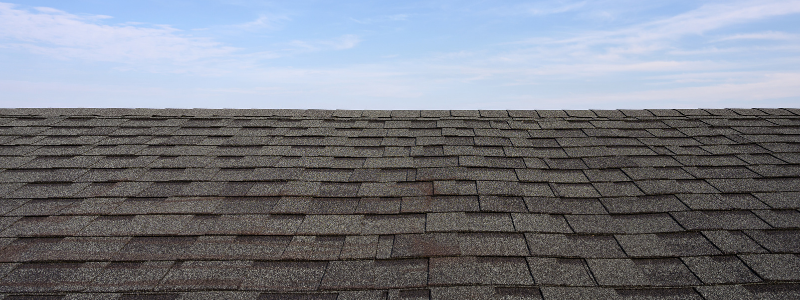
Dark vs. Light
When choosing a roof color for your property, both light and dark-colored roofs have definite advantages in appearance and functionality.
Go Towards the Light
However, in recent years, we’ve seen more property owners opt for light-colored roofs due to their energy-saving properties.
Despite being mainly known for its ability to reflect sunlight and heat away from your home or business, there are other benefits to choosing a light-colored roof; this includes modernizing the property, prolonged service life, and a reduced cooling load.
Energy Efficiency
As mentioned earlier, light-colored roofs are known for energy-saving capabilities. Your roof significantly impacts the temperature inside the building, and a dark roof is more likely to conduct a warmer temperature on the structure below, increasing cooling efforts such as air conditioning. Additionally, dark shingles can absorb enough heat that the surface can become hotter than the temperature outside.
A darker roof might seem beneficial for structures in colder climates as dark shingles can help melt the snow and ice more efficiently. However, the reduced energy load in the winter doesn’t seem to be sizable.
White or light-colored roofs reflect heat rays from the sun, keeping the attic and rooms below it cool during warm weather. As a result, the building’s cooling load decreases, helping home and business owners stay comfortable and save money on their energy bills.
Light-colored roofs are sometimes referred to as ‘cool roofs’ because they provide a reflective barrier, reducing the impact solar heat has on the building, which can help keep the temperature low on the inside and outside. Cool roofing methods can make a difference of 20-40 degrees, which can significantly reduce your property’s cooling costs.
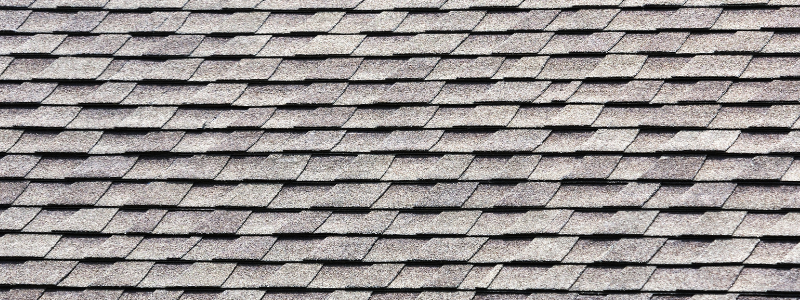
Urban Heat Island Effect
Light-colored roofs can also lower the urban heat island effect, which causes metropolitan areas dense with concrete, buildings, and people to have a hotter temperature than the areas surrounding them. This effect is known for increasing air pollution levels and heat-related illnesses such as heat strokes. The urban heat island effect can also lead to strained energy resources due to the high cooling energy demand, further contributing to global warming.
Service Life
Heat plays a major role in the service life of your new roof. Dark-colored roofs are more prone to damage due to the high level of UV rays absorbed by the shingles; this can cause materials to crack, melt, blister, and fade.
A new roof can be very costly. Therefore it’s important to prolong the service life of your roof as much as possible.
Appearance
When it comes to choosing between dark and light roofs, the first thing you should consider is what would go best with the color of your home or business. The colors of the bricks, sliders, stuccos, or trims of the structure should complement whichever color you choose.
Take a look at the building’s architectural style and decide how your roof shingles can be coordinated with the exterior and the surrounding structures. Dark color roofs such as black and charcoal can execute more of a classic and traditional look. However, it can also make your property look smaller. In contrast, light-colored roofs can make a structure look more extensive and more modern.
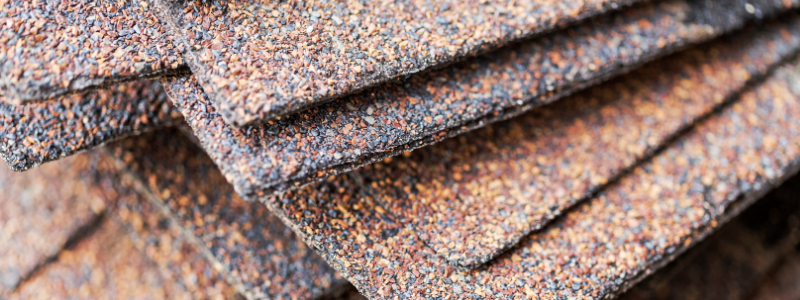
Choosing the right color that compliments the structure itself can make a huge difference in your property’s curb appeal.
Here are some classic color combinations:
| Roof Color | Exterior Color |
| Light Grey | White, Grey |
| Tan | White, Dark Red, Dark Green |
| White | Gray, White, Tan |
| Black | Dark Red, Gray, Tan |
| Brown | Dark Red, Brown, Tan |
Neighborhood Rules & Roofing Codes
Before finalizing a color for your roof, it’s essential to browse through the rules in place for your neighborhood and subdivision; this ensures that you don’t violate any regulations before you start the installation, as some bylaws might even require you to obtain a permit before construction. Also, be sure to be considerate to your neighbors as you want to make sure your new roof doesn’t clash with any surrounding properties.
Additional Factors
Property owners should keep in mind that factors other than color contribute to the building’s conduct and appearance. The type of roof materials used can also play a significant role; Asphalt shingles tend to absorb more heat and have a shorter lifespan, while clay and concrete tiles are more energy-efficient and tend to last longer. Additionally, quality of installation, proper ventilation, and regular inspection will naturally affect your roof’s longevity and energy-saving functions.
In the end, choosing the right roof color and material for your property can improve the appearance of your space, help you reduce utility costs, and help contribute to more significant energy-saving efforts. Request a free estimate from our team of experts, and let B&M Roofing make your roofing process easy and efficient.
B&M Roofing and Residential Roofing
B&M Roofing has extensive experience in residential and commercial roofing, with a Colorado company providing quality service throughout the Centennial State since 1947.
The premier Colorado commercial roofing contractor uses only the highest quality roofing shingle suppliers: GAF and Owens Corning. We offer a wide range of colors and styles to choose from, ensuring that we can match the right roof shingle color to any home’s style.
We work with brands like GAF and Owens Corning to offer you a variety of roofing materials and colors to choose from and allow you to find the perfect color for your home. B&M is always available to help give your home’s roof the beauty it deserves.
How to Prepare for Hailstorms
Hailstorms can be incredibly destructive, causing significant damage to homes and properties. For residents of Colorado, where hailstorms are a common occurrence, being prepared for these natural phenomena is essential. As a roofing company based in Colorado, B&M Roofing understands the importance of proactive measures to safeguard homes from hail damage.
In this article, we will provide valuable insights and practical tips on how to prepare for hailstorms. We will explore the necessary steps homeowners can take to minimize potential harm to their roofs, protect their belongings, and ensure the safety of their loved ones.
From inspecting the roof for vulnerabilities and reinforcing it with hail-resistant materials to installing protective coverings and implementing preventive maintenance strategies, we will delve into various approaches that can significantly reduce the impact of hailstorms on residential properties.
By adopting the proactive measures outlined in this article, homeowners can enhance their preparedness, safeguard their homes, and potentially avoid costly repairs or replacements in the aftermath of hailstorms. Let’s dive in and learn how to prepare for hailstorms effectively.
What is Hail?
If you live in Colorado, you know the damage hail can cause, but did you know that it is formed when water vapor in updrafts reaches a freezing point? Ice is formed and is suspended in the air by updrafts and falls down to be coated by water again.
This process can occur over and over again, adding several layers to the hailstone, which is how golf ball-sized hail can occur. While the average hailstorm only lasts five minutes, the damage can be extremely detrimental.
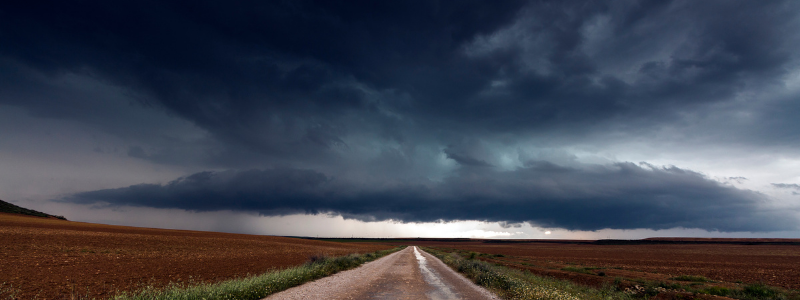
Signs of a Potential Hail Storm
There are a few signs that hail may fall, so if you notice these changes in the weather, start preparing. The sooner you prepare, the more you’ll be able to prevent hail damage.
- A solid (not gradient) wall of dark blue/grey clouds, in contrast with little-to-no clouds – These clouds bring a lot of moisture, along with a cold front. The two together mean a mixture of cold and rain.
- A sudden wave of wind gusts that are higher up in the air – A side draft (between updraft and downdraft) or fluctuating draft is a true sign that a violent thunderstorm is approaching.
- Thunder/lightning – This usually means rain is coming, and given the frequency, it could bring a quick hail storm, too. Not all thunderstorms bring hail, but all hail usually comes with a thunderstorm. So it’s good practice to be prepared any time you hear thunder.
- A quick drop in temperature – When it gets colder, it’s even colder in the atmosphere. This contributes to the creation of hail.
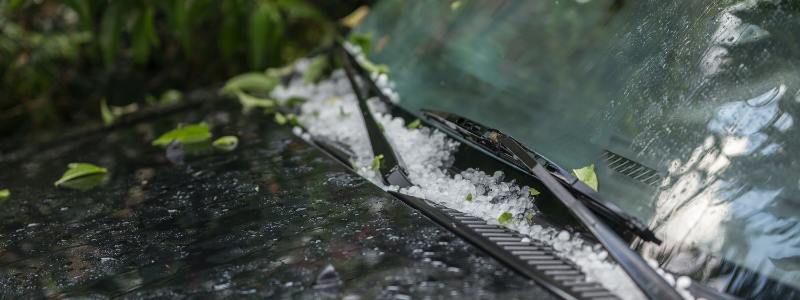
How to Prepare for Hailstorms
When it comes to hailstorms, preparation is key to minimizing potential damage to your home. By taking proactive steps and implementing preventive measures, you can protect your property and ensure the safety of your loved ones. Here are some essential tips on how to prepare for hailstorms:
- Inspect Your Roof Regularly
Perform a thorough inspection of your roof to identify any existing vulnerabilities. Look for signs of wear and tear, loose or damaged shingles, and weak spots that may be susceptible to hail damage. If you notice any issues, contact a professional roofing company like B&M Roofing to address the problems promptly.
- Reinforce Your Roof
- Install Protective Coverings
In areas prone to frequent hailstorms, installing protective coverings like hail guards or screens can provide an added defense for your windows, skylights, and other vulnerable areas. These coverings can help prevent shattered glass and minimize potential damage caused by hailstones.
- Trim Overhanging Trees
Trim any overhanging tree branches near your home, especially those that could potentially break or fall during a hailstorm. Falling branches can cause severe damage to your roof, siding, or windows when combined with hail impact.
- Secure Outdoor Items
Secure or move any outdoor furniture, equipment, or valuables that could be damaged by hail. Strong winds accompanying hailstorms can turn these items into projectiles, posing a significant risk to your property and others nearby.
- Have Emergency Supplies Ready
Prepare an emergency kit that includes essentials such as flashlights, batteries, first aid supplies, and non-perishable food items. Additionally, ensure you have a reliable method of communication, such as a charged mobile phone or a battery-operated radio, to stay informed about weather updates and emergency alerts.
By following these proactive measures and staying prepared, you can significantly reduce the impact of hailstorms on your home. Remember, the safety of your family should always be the top priority. If severe weather conditions are expected, consider seeking shelter in a designated safe area until the storm passes.
How to Prevent Hail Damage to Your Car
Cars can take quite the abuse from Colorado’s harsh weather, but there are a few ways you can protect your car from hail damage.
- Seek cover in covered parking/areas – If you’re on the road frequently (i.e. commuting) know where the closest parking garages are so you can safely ride out the storm. If you can’t reach a garage before the storm hits, pull under an overpass, gas station canopy, or similar spot that can help protect you and your car from hail. Even the overhang from trees may be enough to slow the hail down enough from damaging your car.
- Face the hail head-on – If you can’t find cover, drive into the hail so that the hail hits your windshield rather than your side and rear windows. Your windshield is much stronger than the other windows.
- Park on the side of the building, opposite of the wind direction – If overhead cover isn’t available, try and park on the opposite side of the building from the direction the wind is blowing. The hail may not reach your car as much.
- Use blankets to cover the car – If you can’t get your car to shelter, raid your linen closet and cover the car with any thick blankets, comforters, or even large towels. The more layers, the better!
- Use cardboard to cover the car – Cardboard may also serve as a good source of “padding” and protection against hail. Place it under your windshield wipers to keep them from moving around and the cardboard layers can usually take the brunt of the hail impact.
- Use floor mats to cover the car – If nothing else is available, your car’s floor mats are a great option to use as protection from hail. Place the floor mats carpet-side-up, under your windshield wipers. For side windows, you may have to wedge them up into the rubber window lining.
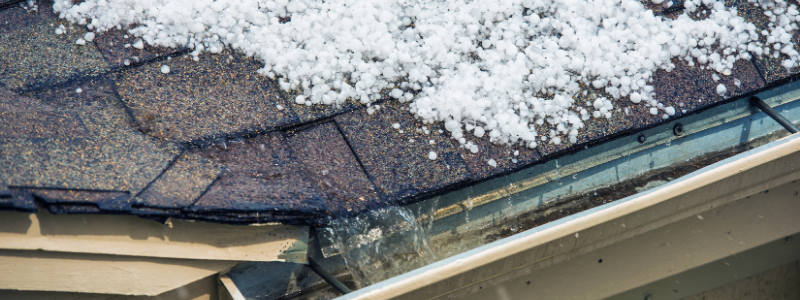
How to Prevent Hail Damage to Your Home
Some hail damage is inevitable, but there are a few good tips that will help limit damage, if any, to your home.
- Close curtains – Make sure to close any curtains or blinds, so that if your windows break, no glass or debris gets blown into the home.
- Trim trees/branches – While the weather is nice, be sure to maintain your trees and shrubbery in your yard. Especially for those taller trees that are closer to your roof, remove any weak branches.
- Protect outdoor furniture – Bring all patio and lawn furniture inside or under a covered area.
- Close umbrellas/canopies/tarps – Hail will rip these fabrics to shreds, so keep them closed when a storm approaches.
- Consider window coverings – Things like hinged shutters or metal awnings may be a good idea, as they’re easier to replace or repair than broken windows.
As we mentioned, some hail damage to your home is inevitable, like damage to your roof. Your home’s roof may take the brunt of the hail impact, but the cost to fix/repair/repair roof shingles is much less compared to other things in and around your home.
How to B&M Roofing Can Help With Hail Damage
B&M Roofing isn’t just another “storm chaser” company. We’re local, we’re experienced, and we’re honest. We’ve seen a hail storm or two and know just exactly what types of damage to expect and look for. If we can save you costs, we will.
- Roof inspections – Call B&M Roofing to inspect your roof shingles for wind or hail damage after a hailstorm.
- Durable, storm-grade materials – The roofing materials offered by B&M Roofing are the most impact-resistant roofing materials, proven to be able to withstand Colorado weather. We only work with the most trusted roofing material companies.
- Proactive maintenance – Early in the spring months, like March or April, we can take some preventative measures with preparing your roof for the hail season.
After a serious hailstorm, be sure to call your insurance company to schedule a damage assessment and then give B&M Roofing a call to make any necessary repairs. At B&M Roofing, we service everything from small residential roofs to large, complicated commercial properties throughout Colorado and surrounding areas.
Flat Roof Leaks in Heavy Rain
From residential homes to commercial buildings, flat roofs have become increasingly popular in Denver and across the Front Range due to their modern aesthetic and cost-effectiveness. Yet, when the rainy season arrives, flat roof leaks in heavy rain can become a significant issue. This guide will provide you with essential knowledge and practical solutions for preventing and fixing these leaks.
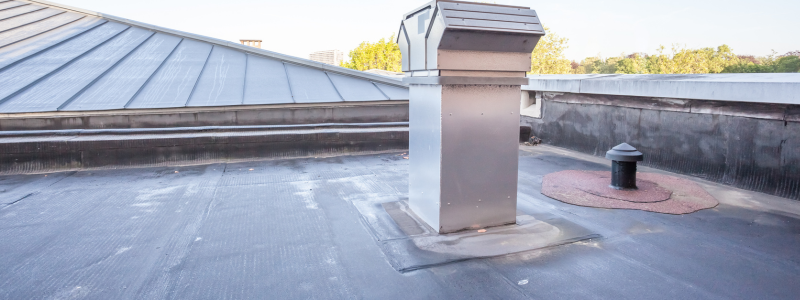
Why Flat Roofs Leak
Flat roofs, as the name implies, are not entirely flat. They have a slight pitch for water drainage. However, due to their low slope, water tends to drain slower than on other pitched roofs. Heavy rain can lead to pooling water, which increases the risk of leaks.
Here’s why:
- Aged Roofing Material: Over time, exposure to harsh weather conditions can weaken the roofing material, making it susceptible to leaks.
- Poor Drainage: Insufficient or clogged drainage systems can cause water to pool, exerting pressure on the roof and causing leaks.
- Faulty Installation: If your flat roof wasn’t installed correctly, it might have imperfections that allow water ingress.
How to Stop a Flat Roof from Leaking in the Rain
First, let’s clear up one important point. If you’re dealing with flat roof leaks in heavy rain, you’ll want to wait until the weather clears before attempting any repairs for safety reasons.
To stop a flat roof from leaking, you need to identify the source of the leak, which can be challenging as the entry point isn’t always located where the leak appears. Once the source is identified, small punctures can often be repaired with roofing cement while larger issues may require a roofing membrane or professional help from B&M Roofing.
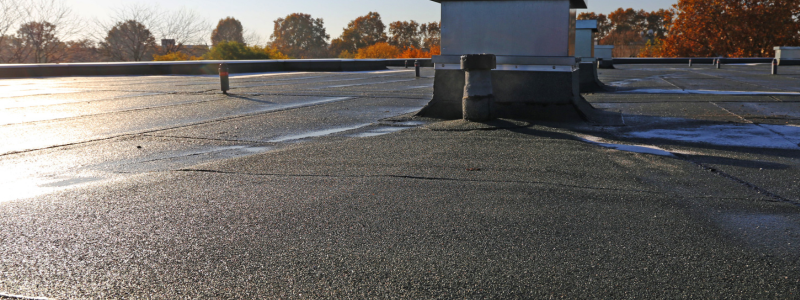
Is it Normal for Water to Puddle on a Flat Roof?
A small amount of water pooling on your flat roof for up to 48 hours after rain can be normal. This is due to the roof’s low slope which slows drainage. However, if water remains longer than this, it can lead to serious problems, including leaks and structural damage.
How to Stop Water Pooling on a Flat Roof
Stopping water pooling on a flat roof involves improving the roof’s drainage system. Here’s how:
- Regular Cleaning: Debris like leaves, branches, and dirt can clog your drains, leading to water pooling. Regular cleaning can prevent this.
- Install Additional Drains: If your current drainage system is insufficient, consider installing additional drains or scuppers.
- Create Tapered Areas: If persistent water pooling is a problem, professionals can create tapered areas on the roof to improve water flow.
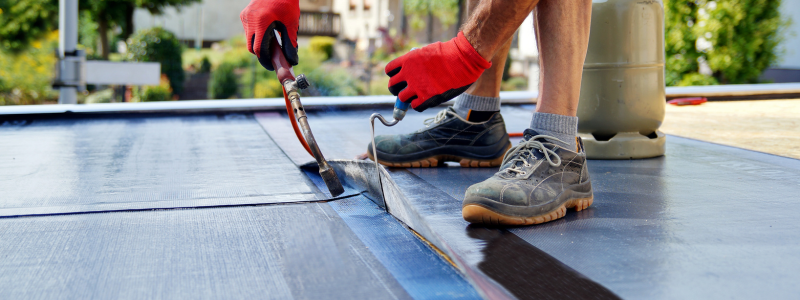
How to Waterproof and Seal a Flat Roof
Waterproofing and sealing a flat roof are essential to prevent flat roof leaks in heavy rain. There are several methods to achieve this, including:
- Roof Coating: This involves applying a waterproof coating over the entire roof. It fills cracks and crevices, providing a watertight seal.
- Modified Bitumen: This is a type of roofing material designed to be highly waterproof. It’s excellent for flat roofs in areas with heavy rainfall.
- Single-Ply Membrane: This roofing material is durable, resistant to tears, and highly waterproof.
- Regular Maintenance: Regular inspections and maintenance are key to keeping your roof waterproof. Small issues can be caught early before they become major leaks.
B&M Roofing: Colorado’s Flat Roof Experts
Flat roofs can be excellent choices for both residential and commercial buildings. However, managing and preventing leaks, particularly during heavy rain, is essential for their longevity and performance.
Remember, safety first!
If you’re dealing with leaks, professional companies like B&M Roofing are just a call away.
We are experienced in handling all types of roofing repairs, including flat roofs, metal roofs, and tile roofs, ensuring your property remains secure and dry, no matter the weather.
Hail Season in Colorado
Hail season in Colorado… Just hearing those words is enough to make any Coloradan tremble. We all know that our beloved state of Colorado is no stranger to extreme weather, and hailstorms are one of the many challenges we face here in the beautiful Front Range area. If you’ve ever experienced the fury of a hailstorm, you know the damage it can cause, especially to our homes and roofs. But fear not! B&M Roofing, your local roofing experts, are here to help you weather the storm.
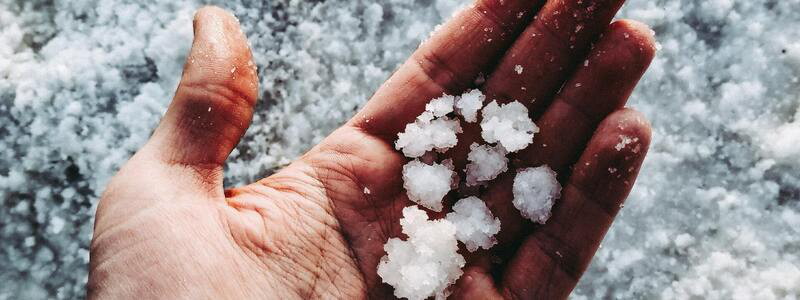
How Common is Hail in Colorado?
Colorado is located right in the heart of”Hail Alley,” a region stretching from Wyoming to Texas that sees some of the most intense hailstorms in North America.
So, it’s safe to say that hail is no stranger to our state.
But just how often do we find ourselves dodging icy pellets from the sky?
How often are hail storms in Colorado?
Hailstorms can occur at any time of the year in Colorado, but they are most common during the spring and summer months. In fact, Colorado averages about three to four major hailstorms each year. That’s right, Mother Nature can really throw one hail of a party!
In just a short length of time, maybe even just one spring/summer, you’ve likely experienced at least a few hailstorms. It’s practically a rite of passage for all Coloradans. But hey, look on the bright side – at least we have some interesting stories to tell our friends from out of state! And the pictures to prove them!
When is Hail Season in Colorado?
Hail season in Colorado typically runs from late spring to late summer (with some storms even in early fall), with the highest frequency of hailstorms occurring in May, June, July, and August. Sometimes as early as April.
It’s during this time that our unpredictable weather patterns can turn a sunny day into a hailstorm in the blink of an eye.
So, when you hear those ominous rumblings and see dark clouds gathering, it’s a good idea to keep an eye on the sky and be prepared for the possibility of hail.
What Month Has The Most Hail in Colorado?
Ah, the million-dollar question: what month brings us the most hail in Colorado?
Well, statistically speaking, July takes the crown.
It seems that summer is the season when hailstones like to make their grand entrance, causing havoc and making our roofs feel like they’re under attack.
So, if you’re planning any outdoor activities during this month, make sure you have a contingency plan in case a hailstorm decides to crash the party.

What Part of Colorado Gets the Most Hail?
Now, you might be wondering if hailstorms play favorites when it comes to the different regions of Colorado. And the answer is, yes, they do!
While hail can strike anywhere in our beautiful state, certain areas tend to see more hail than others.
So, where should you be on high alert for hail?
The Front Range
Well, lucky for us, we’re right here in the Front Range area, and boy, do we get our fair share of hailstorms. From Fort Collins to Denver and all the cities in between, we’re in the prime zone for hail. It’s like living in the middle of a giant target that Mother Nature likes to aim for. But fear not, because B&M Roofing, based right here in Frederick, is at your service to protect your roofs from hail damage.
Eastern Plains
If you venture out east towards the Plains, you’ll find another hail hotspot.
The Eastern Plains of Colorado experience frequent hailstorms, thanks to the unique weather patterns that sweep across the region. So, if you’re a proud resident of the Eastern Plains, you know the drill – keep an eye on the sky, seek shelter when necessary, and make sure your roof is prepared to withstand the hail onslaught. We do also service this region, so don’t hesitate to call us, as we’re not far away.
Mountainous Regions
Now, you might think that the mountainous regions would be safe from hail, but think again! Even our majestic mountains are not immune to hailstorms. In fact, the high elevation and unique atmospheric conditions can create perfect conditions for hail formation. So, whether you’re living in the foothills or high up in the Rockies, it’s essential to have a sturdy roof that can withstand the impact of hailstones. If you find yourself “up the hill” from us, unfortunately, we do not service your area. We are happy to give recommendations, though, if you contact us.
Protecting Your RoofDuring Hail Season
Now that we’ve established that hail season in Colorado is a force to be reckoned with, let’s talk about how you can protect your roof from hail damage. Here are a few tips to keep in mind:
- Inspect Your Roof Regularly: Before hail season hits, it’s a good idea to inspect your roof for any signs of damage or vulnerability. Look for loose or damaged shingles, cracks, or weak spots that could be susceptible to hail impact. If you’re not comfortable doing the inspection yourself, you can always rely on the experts at B&M Roofing to assess the condition of your roof.
- Consider Impact-Resistant Roofing Materials: When it comes to hail, not all roofing materials are created equal. Consider investing in impact-resistant roofing materials that are designed to withstand the force of hailstones. Options such as asphalt shingles with a higher impact resistance rating or metal roofing can provide an added layer of protection for your home.
- Maintain Proper Roof Ventilation: Adequate roof ventilation is crucial for preventing heat and moisture buildup in your attic, which can weaken the structure of your roof. Make sure your attic is properly ventilated to reduce the risk of hail damage and other roofing issues.
- Trim Trees and Overhanging Branches: During a hailstorm, overhanging branches can pose a significant risk to your roof. Trim any branches that are close to your roof or could potentially fall onto it during a storm. This will help minimize the chances of damage from falling branches and hail impact.
- Consider Impact-Resistant Skylights: Skylights can add beauty and natural light to your home, but they can also be vulnerable to hail damage. If you have skylights, consider upgrading to impact-resistant options that are designed to withstand the impact of hailstones.
- Insurance Coverage: Review your homeowner’s insurance policy to understand what coverage you have for hail damage. Ensure that your policy adequately protects your home and belongings in the event of a hailstorm. If you have any questions or concerns about your coverage, don’t hesitate to reach out to your insurance provider.
Trust B&M Roofing for Your Hail-Related Roofing Needs
When it comes to hail season in Colorado, having a reliable and local roofing partner can make all the difference. That’s where B&M Roofing comes in. As your trusted roofing experts in the Front Range area, we understand the unique challenges posed by hailstorms, and we’re here to help you navigate through them.
Here’s why choosing B&M Roofing for your hail-related roofing needs is a smart move:
- Local Expertise: We are a local company based in Frederick, Colorado. Being in the heart of the Front Range area allows us to respond quickly and effectively to any roofing emergencies or hail-related issues. We know the ins and outs of Colorado weather and the specific needs of roofs in our region.
- Timely Response: When hail strikes, time is of the essence. With B&M Roofing, you can count on us to respond promptly to your roofing needs. We understand the urgency and will work diligently to assess and repair any hail damage to your roof.
- Quality Workmanship: We take pride in our work and strive for excellence in every project we undertake. Our experienced roofing professionals are skilled in identifying and repairing hail damage, ensuring that your roof is restored to its optimal condition.
- Customer Satisfaction: Our customers are at the heart of everything we do. We believe in building strong relationships based on trust, transparency, and exceptional customer service. We’ll guide you through the entire process, from the initial assessment to the final repairs, ensuring your satisfaction every step of the way.
Remember, hail season in Colorado may be unpredictable, but you can take proactive steps to protect your roof and minimize the impact of hailstorms. And when you need a reliable roofing partner, B&M Roofing is just a call away.

Don’t let hailstorms rain on your parade. Reach out to B&M Roofing today and let us help you weather the storm with confidence!
Call us today at 303.938.9642 to schedule a visit from our emergency repair team or visit our leak repair request page to submit your information and have one of our team members contact you.
Our 24/7 support line is here to help immediately with emergency roof repair. Calling sooner means less of a wait and more opportunities to repair before extensive damage is done. We offer work throughout Colorado, including:
- Denver
- Colorado Springs
- Fort Collins
- Boulder
- Greeley
- Rocky Mountain areas
- Surrounding states including Wyoming, Utah, Kansas, Nebraska
Best Roof For Hail
Hailstorms can cause significant damage to homes and property. Hailstones can range from golf ball size to baseball-sized. The force of these stones can break windows, shatter glass doors, and even dent vehicles.
There are some areas such as Colorado that are prone to hail during April and into July. Therefore, having the best roof for hail will provide protection and help anticipates the damage. There are several types of roofs that can withstand strong winds and heavy rain.
In this article, we will be discussing what are the best roofs and materials that will endure hail.
Damage Caused by Hail on The Roof
In Colorado, you will be familiar with the damage that hail can cause to your roofs. Even though a hailstorm may only last a couple of minutes, it can cause disastrous damage in that short amount of time to your roof.
Hail can do multiple things to your roof, it can not only damage your roof but also damage other elements of the roof. Such as the chimney, gutters, vents, and skylights. Alongside that, hail can crack the shingles, (except the hail resistant shingles) and weaken the seals on your roof, just to name a few.
All of these things then lead to leaks starting to form in our roof, which can lead to further damage in your home. As a result, it is important to stay on top of any damage that is caused to your roof. Thus, if you notice any damage to your roof or suspect any damage, then you call a professional to inspect your roof.

What Is The Best Roof for Hail Storms?
There are many kinds of best roofs for hail storms that can be used for protecting your home. Some of them include:
Metal Roofs
Metal roofs have been around for years, and they still remain one of the most popular best roof for hail. They are made out of metal sheets that are attached together with screws, nails, etc. Metal roofs are very durable and long-lasting, which makes them an excellent choice for protecting your home from severe weather conditions. However, there are some cons associated with using metal roofs. One of the main con there is the chance that if the hail is big enough, it can dent the roof, especially if you have a flat roof.
Thicker metal panels are much more durable as they can deflect the hail. Yet over time, the impact of multiple hail storms will begin to show.
Impact-Resistant Shingles
Asphalt shingles are a popular choice for residential roofs, and luckily, there are impact-resistant options available. These shingles are specially designed to withstand the force of hailstones. They are constructed with reinforced fiberglass matting and have a higher impact resistance rating than standard shingles. Impact-resistant shingles can help minimize the risk of damage and prolong the lifespan of your roof.
Slate or Tile Roofs
Slate and tile roofs are renowned for their resilience and longevity. These materials have a natural resistance to hail damage due to their solid and robust composition. Slate and tile roofs can withstand the impact of hailstones without sustaining significant damage. While they may be a higher initial investment, they offer exceptional durability and an elegant appearance.
Rubber/EuroShield Roofs
Synthetic roofing materials, such as synthetic slate or rubberized shingles, are gaining popularity due to their hail-resistant properties. These materials are engineered to mimic the look and durability of natural materials while providing additional impact resistance. They can withstand hailstorms without cracking or breaking, offering excellent protection for your home.
These rubber roofs are very sturdy as they absorb all the impact caused by the hail. Thus, the hail easily bounces off the roof. Alongside that, rubber roofs are made from recycled tires and come in various styles and colors. Yet, they are an eco-friendly option that are also very low maintenance.
Tile Roofs
Tile roofs can be made from slate, clay, concrete, or ceramic and will last for many years. This type of roof is ideal for hailstones that are smaller than 2 inches. However, if the hail is any bigger, then the chances of the tiles breaking or chipping is increased, which may also not be covered by some insurance companies.
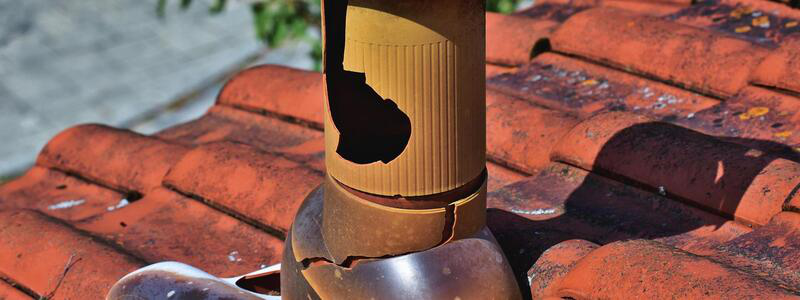
Class 4 Hail Resistant Metal Roof
A class 4 hail-resistant metal roof is the highest impact rated roof you can get your hands on. They can withstand hail that is around 2 inches big. Often these roofs are made from aluminum, copper, asphalt, plastic or resin shingles.
These roofs can also stand 110 miles per hour winds and are a great long term investment. If you want a roof that will give you long-term protection from hailstorms, then you may want to consider a class 4 roof. Especially, as their impact rating is so high, you will have to spend less money on this roof for maintenance or replacement costs.
F-Wave Roofs
An F-wave roof is another low-maintenance roof that is very durable and lightweight. They also have a class 4 hail rating and can withstand 130 miles per hour winds. When you purchase an F-wave roof there is the option to have roofs that look similar to slate, asphalt or cedar shakes.
An F-wave roof is one of the few roofs that have a hail warranty, which is very handy when it comes to living in Colorado.
What Materials Are Hail Proof?
Hailstorms can wreak havoc on our homes, causing extensive damage to roofs and leaving us with hefty repair bills. Therefore, it’s natural to wonder if there are any materials that are hail-proof. While no material can claim to be completely immune to hail damage, some options offer higher levels of resistance than others. Let’s explore a few materials known for their hail-resistant properties:
- Metal Roofing: Metal roofs, typically made of steel, aluminum, or copper, are highly regarded for their durability and resilience. Metal panels are inherently strong and can withstand the impact of hailstones. Additionally, their smooth and slippery surfaces allow hail to slide off more easily, reducing the risk of damage. Metal roofs are a popular choice in hail-prone areas due to their ability to deflect hailstones and minimize potential harm.
- Stone-Coated Steel: Stone-coated steel roofing combines the strength of metal with a protective layer of stone chips. This combination creates a highly durable and hail-resistant material. The stone coating adds an extra layer of protection against hail impact and helps to absorb and distribute the force. Stone-coated steel roofs are an excellent choice for areas susceptible to severe hailstorms.
- Synthetic Roofing Materials: Synthetic roofing materials, such as synthetic slate, rubberized shingles, or polymer-based tiles, offer a hail-resistant alternative to natural materials. These synthetic options are engineered to withstand the impact of hailstones without cracking or breaking. They are designed to be flexible and durable, providing a high level of resistance to hail damage. Synthetic roofing materials are a popular choice for homeowners seeking both durability and aesthetic appeal.
- Concrete and Clay Tiles: Concrete and clay tiles are known for their robustness and ability to withstand harsh weather conditions. These tiles are naturally resistant to hail impact due to their solid composition. The density and thickness of concrete and clay tiles provide excellent protection against hail damage. However, it’s worth noting that extremely large hailstones or severe hailstorms can still cause some level of damage to these materials.
While these materials offer a higher level of hail resistance compared to others, it’s important to remember that no roof is entirely hail-proof.
In severe hailstorms with unusually large hailstones, even the most resilient materials can sustain some damage. However, choosing hail-resistant materials can significantly reduce the risk and extent of damage to your roof.
When considering hail-resistant materials, it’s essential to consult with roofing professionals who have expertise in hail-prone regions. They can provide guidance on the best materials for your specific climate and help you make an informed decision based on your needs and budget.
Are Metal Roofs The Best for Hail Storms?
Yes, metal roofs are better for hail because they are very durable and strong. As we mentioned before, the only thing that could damage a metal roof is a large hail storm. Even then, the chances of damaging the roof are minimal.
Metal roofs are also very easy to install and maintain. You do not need to worry about any special tools or skills needed to install a metal roof. All you need to do is attach the metal sheets together with screws, nails etc. Once the roof is installed, you just need to make sure that you keep it clean and free of debris.
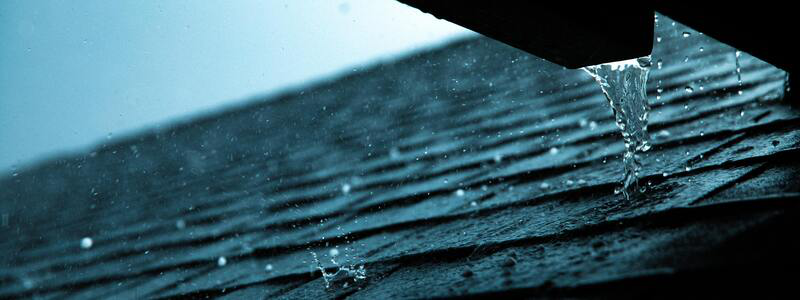
What Can I Do To Protect My Roof From Hail?
If you live in an area where hail storms are common, then you should take steps to protect your roof against the effects of hailstorms. The best way to do this is to choose a good roof system for your home. A roof that has been designed specifically for hail resistance will help to protect your home from hailstorms.
Alongside that, when the weather is nice, you should keep your trees and shrubs maintained. If you have tall trees, then you should remove any branches that are considered weak. Otherwise, when a hail storm occurs, these branches could fall down and damage your roof.
Your home also needs to be protected by hail alongside your roof. To protect the rest of your home, you should close any blinds or curtains so that if any windows break during the storm, no glass will be blown into your home. Also, hinge shutters are a great idea to have installed. This is because they are much easier to repair or replace than a broken window.
Finally, any outdoor furniture must be put under a covered area or brought inside to keep them safe. Also close all tarps, umbrellas or canopies in the garden. Otherwise, the hail storm will destroy the fabric. So it’s best to keep them closed.
Protect Your Roof with B&M Roofing Colorado
In Colorado, hail storms are very popular and can cause a lot of damage to your roof. Hence, having a metal or rubber roofs could help prevent your roof from being damaged due to hail.
At B&M Roofing, we inspect your roofs for hail damage, and offer you durable and hail resistant materials to be used on your roofs. We will also offer you preventive measures in the spring before the hail season.
Call us today at 303.938.9642 to schedule a visit from our emergency repair team or visit our leak repair request page to submit your information and have one of our team members contact you.
Our 24/7 support line is here to help immediately with emergency roof repair. Calling sooner means less of a wait and more opportunities to repair before extensive damage is done. We offer work throughout Colorado, including:
- Denver
- Colorado Springs
- Fort Collins
- Boulder
- Greeley
- Rocky Mountain areas
- Surrounding states including Wyoming, Utah, Kansas, Nebraska
Common Roof Pitch
At B&M Roofing, we understand that a roof’s pitch is one of the most crucial aspects of roof design. It’s not just about how it looks; the pitch plays a vital role in how effectively water, ice, and snow are drained away. A well-considered roof pitch can also influence maintenance time and costs, making it a key factor in our recommendations. Additionally, the pitch can determine which materials are suitable for your roof. In Colorado, we often see specific pitches that work best for both commercial and residential properties. Let us help you select the ideal pitch for your roofing needs.
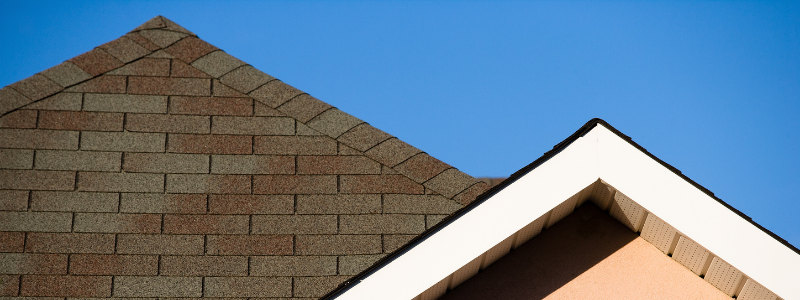
What is Roof Pitch?
The pitch is the slope, slant, or angle of your roof.
It is usually expressed as a rise in inches for every horizontal foot of length. So, a 6/12 roof would have a vertical rise of six inches per horizontal foot.
When architects design a roof’s pitch, they must consider several key factors: the weight of the roofing materials, the projected lifespan of the roof, the associated costs, the required maintenance, and the roof’s appearance.
Most Common Roof Pitch for Residential Buildings
Conventional slope roofs are most common with residential roofs.
This means the slope has a pitch between 4/12 and 9/12 on most homes.
Roofs with a pitch exceeding 9/12 are referred to as steep-slope roofs.
Steep-slope roofs are used for their aesthetic appeal and also offer several other benefits.
Most Common Roof Pitch for Commercial Buildings
Roofs on commercial buildings typically have a lower slope than those on houses.
A typical low-slope roof has a pitch between 2/12 and 4/12.
A roof slope of under 2/12 is considered flat. Technically, it does have some slope.
For drainage, the minimum slope must be at least ¼” per foot.
Designers of commercial buildings often use low-slope roofs because they are less expensive.
Low-slope roofs are often used on large buildings, such as factories and warehouses.
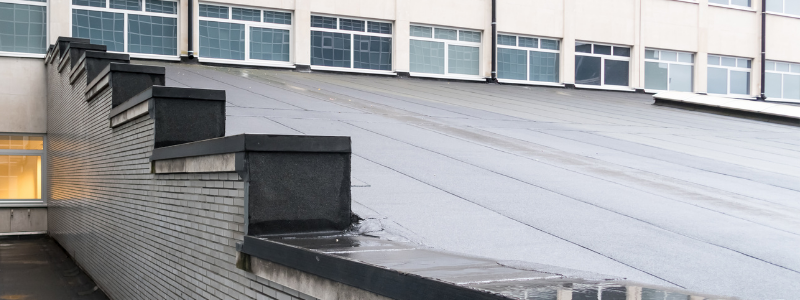
Why Opt For a Steeper Slope?
Steeper sloped roofs are visually pleasing. They also last longer because water doesn’t accumulate.
Water, melting snow, and ice will run off immediately. This prevents ice damming.
Steeper-sloped roofs are more expensive.
They require more materials and more labor. For some taller or larger structures, a steep slope isn’t practical.
Relationship Between Materials and Pitch
Roof material selection largely depends on the roof slope. Single-ply or torch-down roofs aren’t suitable for steep hills, while shingles and tiles aren’t recommended for low-slope roofs. Shingles and tiles perform well on slopes of 4/12 or higher.
Asphalt shingles are cost-effective but have a shorter lifespan of 20 to 50 years, depending on conditions. They are lightweight and versatile, making them popular in North America; however, special installation techniques are required for low-slope roofs (2/12 to 4/12).
Clay, natural slate, and concrete tiles offer durability and can last a lifetime when installed correctly. However, they are heavy (900 to 1,200 pounds per 100 square feet) and costly, with clay tiles priced between $6 and $10 per square foot, while slate is pricier.
Metal roofing, made from painted aluminum or steel, is lightweight (ranging from 40 to 135 pounds per 100 square feet) and suitable for any pitch. Aluminum is increasingly popular due to its resistance to rust and its ability to mimic other materials. It’s also eco-friendly and long-lasting, though costs vary.
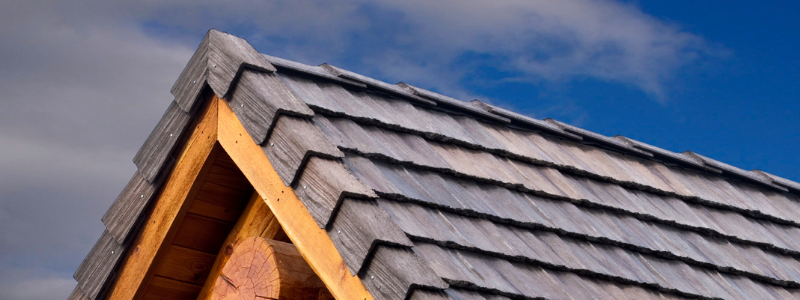
Common Roof Pitch Mistakes
Pitching a roof too steep or too low for the building and Colorado climate is a common mistake.
A minimum slope of four units of rise per twelve units of run is crucial if you are using asphalt, wood, or tile shingles or shakes.
Another is choosing roofing materials that don’t match the roof slope. This can result in water leaking into your home or business.
- Failing to consider the winter climate can result in building water damage or even roof collapse.
Never assume that the slope that works on one home or business will work on all structures.
Colorado’s Unique Climate and Weather Patterns
Colorado experiences a unique climate and weather patterns that have a significant impact on roof design and pitch. Understanding these factors is crucial when considering the construction or renovation of roofs in the region.
Here are some essential points to note regarding Colorado’s climate and how it affects roof design:
- High Altitude Effects: Due to its higher altitudes, Colorado experiences variations in air pressure, solar radiation, density, oxygen levels, temperature, and atmospheric water vapor. These factors can lead to increased wear and tear on roofs, making routine maintenance essential for extending their lifespan.
- Winter Challenges: Colorado is renowned for its heavy snowfall, which poses the risk of ice dams. Ice dams form when melting snow is blocked from draining, leading to potential water damage. To prevent this, it’s crucial to have a roof pitch steep enough to allow water to drain effectively.
- Sun Exposure and UV Radiation: Colorado boasts approximately 300 sunny days annually. While this is appealing, it also means that roofs endure prolonged exposure to intense sunlight and UV radiation. This can accelerate the deterioration of roofing materials over time, making it crucial to choose appropriate materials that can withstand these conditions.
- Extreme Temperature Fluctuations: Colorado’s climate is characterized by significant temperature fluctuations, with hot summers and cold winters. These extreme temperature changes can cause the expansion and contraction of roofing materials, potentially leading to roof damage if not adequately accounted for during the design and installation process.
- Proper Insulation and Ventilation: Insulation and ventilation play a vital role in maintaining the durability and performance of roofs in Colorado. Proper insulation helps regulate indoor temperature and prevents heat loss. In contrast, adequate ventilation prevents moisture buildup and reduces the risk of condensation-related issues, such as mold and rot.
- Expert Guidance: Given the specific challenges posed by Colorado’s climate, it’s advisable to consult with roofing specialists who are knowledgeable about the region’s weather patterns and can provide guidance on optimal roof pitch, materials, insulation, and ventilation systems.
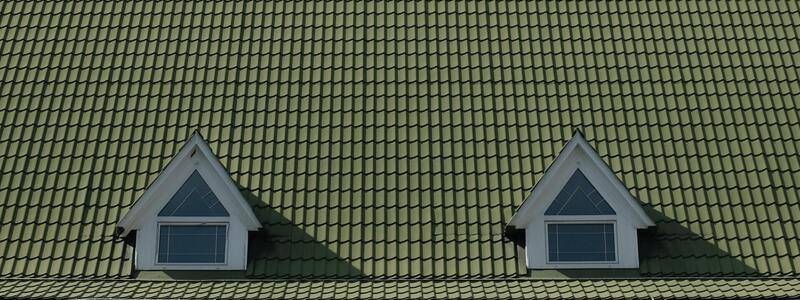
How Can B&M Roofing Help?
Your roof protects your family or your business. It needs to be installed with materials that fit the roof slope. We are familiar with the most common roof pitch in Colorado. We will recommend the best for your residential or commercial property.
Regular maintenance, including regular inspections, cleaning, and repairs, can extend the roof’s lifespan and prevent costly repairs. Business owners can follow these commercial roof maintenance tips to keep their commercial roofs in good condition, ensuring the longevity and performance of their buildings.
B&M Roofing’s roofing services offer exceptional expertise and experience in a wide range of roofing materials, including metal, shingles, tile, low-slope, asphalt, and more. We offer skilled, professional, and dependable roofing services in Colorado.
For more information about the best materials and installation for your roof pitch or to inquire about a free estimate, contact us now.
Commercial Roof Maintenance Tips
As business owners, you’ve got your hands full with finances, employees, and everything. It’s easy to forget about the roof, but maintaining it is crucial to protect your building, assets, and employees. Keeping your roof in top shape means a longer lifespan, better performance, and fewer costly repairs.
Please don’t wait until it’s too late to take care of your roof! This article uncovers the secrets to keeping your commercial roof in excellent condition for years. Discover the simple commercial roof maintenance tips that make a big difference, from keeping track of maintenance logs to regularly unclogging gutters and drains. So why wait? Take control of your roof’s future today and ensure its longevity!
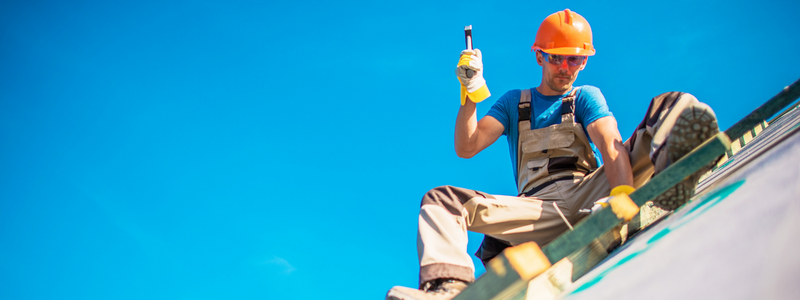
No matter what type of commercial roof your business has, it will need maintenance. Learn more about some recommended roof maintenance tips and tricks below.
Advice for Commercial Roof Care
Commercial roofs come in various designs, each with specific features and maintenance requirements. It’s essential to consider the particular needs of your building and business when choosing a commercial roof type. You may be wondering how much does commercial roofing costs? A professional roofing contractor like B&M roofing services can help you determine the best option for your situation.
The following are a few typical styles of business roofs:
Flat Roofs
- Flat roofs are made of various materials such as built-up roofing, single-ply membrane, or spray foam and provide a flat, level surface. These are the most common commercial roofs found on most low-rise commercial buildings. Flat roofs are easy to access but require regular maintenance to prevent leaks.
Membrane Roofs
- Membrane roofs are made of synthetic materials, such as PVC or TPO, and are famous for their durability and energy efficiency. They are an excellent choice for businesses looking for a low-maintenance roofing option.
Metal Roofs
- Made of materials such as aluminum, steel, or copper, metal roofs are durable and long lasting, making them a popular choice for commercial buildings. They are also energy-efficient and fire-resistant, providing additional benefits for business owners.
Built-Up Roofs
- Built-up roofs comprise multiple layers of asphalt, gravel, and tar and are commonly on flat commercial roofs. They are a cost-effective option but require regular maintenance to keep them in good condition.
Modified Bitumen Roofs
- Modified bitumen roofs are similar to built-up roofs and are made of asphalt and a fiberglass or polyester reinforcement layer. They are durable and easy to install, making them a popular choice for commercial buildings.
Shingle Roofs
- These roofs, which come in various sizes, forms, and colors, are built of asphalt or composite materials. They are well-liked since they are inexpensive and straightforward to install.
Wood Shake Roofs
- These roofs have a rustic, natural appearance and are composed of natural wood like cedar, redwood, or pine. They are pricey compared to other roofing solutions but have a long lifespan and need regular maintenance.
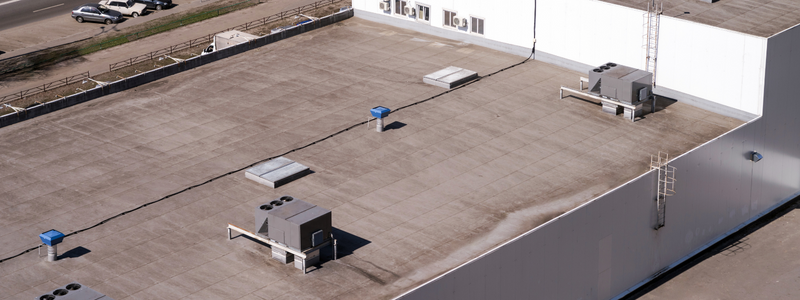
Tips for Maintaining A Commercial Roof
Maintaining a commercial roof ensures longevity and protects the building’s interior. Regular inspections, cleaning, and repairs can help prevent leaks and prolong the roof’s lifespan. Here are some commercial roof maintenance tips and tricks:
Commercial Roof Maintenance Checklist
- Keeping records of all roof maintenance activities is critical. This log should include the date of inspection, any repairs made, the type of repair, and the cost. This information can help you track trends and determine the areas of concern that need addressing. Maintaining a roof maintenance log ensures the roof is adequately cared for and provides a clear history.
Get Leaks Fixed Right Away
- Leaking roofs can cause significant damage to the building’s interior, leading to costly repairs. As soon as you notice a leak, it would be best to take immediate action to repair it. Even for residential structures, you can call B&M commercial roofing services to diagnose the problem and make necessary repairs.
Get Your Roof Inspected Twice a Year
- Regular roof inspections are crucial to maintaining the health of your commercial roof. During these inspections, the top undergoes thorough examination for any damage, leaks, or other issues. The best times to inspect your roof are in the spring and fall, before and after extreme weather conditions. Regular inspections help catch problems early and prevent them from becoming more extensive and expensive.
Avoid Walking on the Roof
- Walking on the roof can cause significant damage to the roofing material, especially if its design is for pedestrian traffic. It is essential to only walk on it when it’s necessary for maintenance or repair purposes. When walking on the roof, use caution and take steps to minimize damage.
Check Your Roof after Bad Storms
- After a severe storm, inspecting your roof for damage is essential. Look for missing or damaged shingles, cracks, punctures, and other signs of wear. If you notice any problems, it is necessary to repair them as soon as possible to prevent further damage.
Commercial Roof Preservation
- Dirt, debris, and other materials can accumulate on the roof over time, reducing its performance and causing damage. Regular roof cleaning can help prevent this and is an integral part of regular roof maintenance. You can clean your roof using a broom or a blower, but be sure to use caution and avoid causing damage to the roofing material.
Regularly Unclog Gutters and Drains
- Clogged gutters and drains can cause water to back up, causing damage to the roof and building. Regularly cleaning your gutters and drains is essential to roof maintenance and prevents this damage. Make sure to clear any debris, leaves, and other materials clogging the gutters and drains, and check them regularly to ensure they are functioning correctly.
Prune Overhanging Tree Branches
- Overhanging tree branches can damage the roof by scratching or puncturing the roofing material. Regularly pruning tree branches near the roof can help prevent this damage. When pruning, take care to avoid damaging the roof and make sure to clean up any debris that may have fallen on the roof.
Get Snow Cleared in Winter Months
- Snow can cause significant damage to a commercial roof, especially if it stays on it for an extended period. Snow can also cause the roof to collapse if too much weight is on it. It is essential to have the snow cleared from the roof as soon as possible to prevent this from happening. You can do this by using a snow rake or hiring a professional to remove the snow.
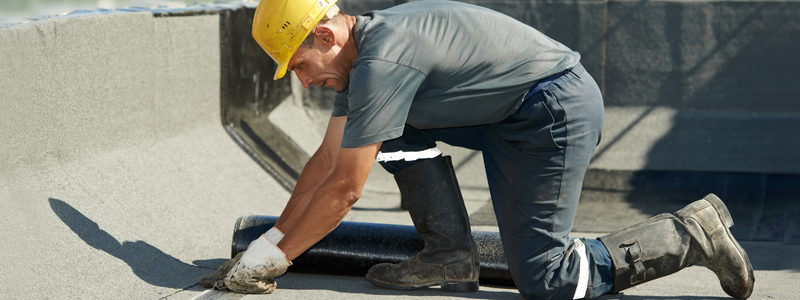
Commercial Roof Maintenance Tips in Colorado
Maintaining a commercial roof is essential to building ownership.
Regular maintenance, such as regular inspections, cleaning, and repairs, can extend the roof’s life and prevent costly repairs. Business owners can follow these commercial roof maintenance tips to keep their commercial roofs in good condition, ensuring the longevity and performance of their buildings.
B&M roofing services bring exceptional expertise and experience in roofing materials, including metal, shingles, tile, low slope, asphalt, and more. We offer skilled professional and dependable roofing services in Colorado.
Popular Roof Shingle Colors
The roof of a home is one of the most important and expensive investments homeowners make. It protects the house from the elements and contributes to its overall look and aesthetics. Choosing the right color for a roof is a big decision that should take with seriousness. It can be daunting to decide where to start with many available options.
This article explores the most popular roof shingle colors for residential properties and discusses the latest trends and styles.
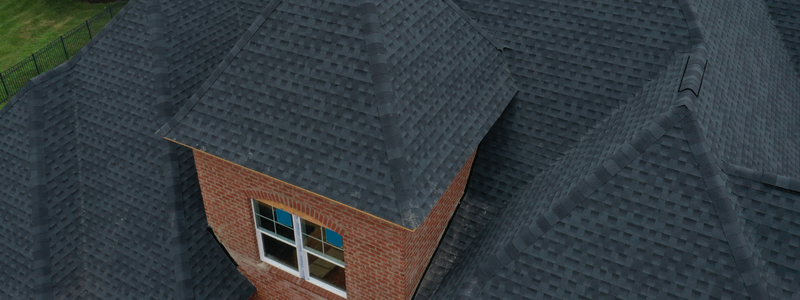
What is the Most Popular Shingle Roof Color?
According to a recent survey, the most popular shingle roof color is black.
Black roof shingles are a timeless and versatile color that has remained a popular choice for many homeowners. Its classic and sophisticated appearance is perfect for both traditional and modern homes, making it a popular choice for many architectural styles. The color black is also great for hiding dirt and stains, which is why it is commonly better for roofing.
However, black is not the only popular color, as homeowners are also choosing shades of gray, brown, and blue to enhance the look of their homes.
Lighter roof colors are better for energy efficiency and they don’t get as hot as black shingles under the sun. So, if you’re looking to have a more energy-efficient roof, light roof shingles are popular roof shingle colors.
What are the Most Popular Roof Colors for 2023?
As we move into 2023, there is a growing trend toward more natural and earthy colors for roof shingles. The natural world inspires these colors, which are perfect for homeowners looking for colors that complement their environment and enhance the look of their homes.
Shades of brown, tan, and green are becoming increasingly popular as they often reflect the natural beauty of the surrounding landscape.
These colors are perfect for homes with natural and organic architectural styles, such as stone and wood accents. They are also easily coordinated with other design elements, such as siding, shutters, and door colors. This makes them a common option for homeowners who want a cohesive and harmonious look for their homes.
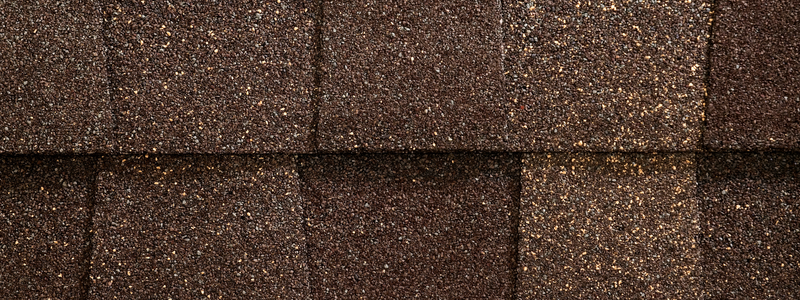 Brown roof shingles are an excellent option for those who want a color inspired by nature.
Brown roof shingles are an excellent option for those who want a color inspired by nature.
Brown roof shingles come in various shades, including light beige, chocolate brown, and deep caramel, which makes it easy to choose a color that matches the overall design of a home. Brown roof shingles are perfect for homes with natural and organic architectural styles, such as stone and wood accents.
Tan roof shingles are another popular color in 2023.
They are perfect for homeowners looking for a natural, earthy color that is easy to coordinate with other design elements. Tan roof shingles come in various shades, making it easy to choose a color that matches the overall design of a home. They are also ideal for homes with a traditional or classic architectural style.
Green roof shingles are a unique and eye-catching color that is perfect for homeowners who want to make a statement with their roofs.
Green roof shingles come in various shades, including light green, forest green, and sage green. This makes it easy to choose a color that matches the overall design of a home. Green roof shingles are perfect for homes with a natural and organic architectural style and those with a modern or contemporary design.
What is the Shingle Color of 2023?
Owens Corning is a well-known manufacturer of roofing materials, including shingles, and they have recently announced their 2023 Shingle Color of the Year: Midnight Plum.
This new color option for their Duration® Designer shingles is expected to be very popular among homeowners who are looking for a modern and sophisticated color palette for their roofs.
Midnight Plum is a rich, deep shade of purple that offers a unique look for residential roofing. This color is a perfect blend of blue and red tones, creating a distinct hue that can complement various exterior design styles. It is a versatile color that can work with a range of home styles, from traditional to contemporary. It can be an excellent choice for homeowners who want to make a bold statement with their roofing color.
In addition to its striking appearance, Owens Corning’s Duration® Designer shingles are also designed for durability and longevity. They are made with patented SureNail® Technology, which ensures they stay in place even in high winds. They are also engineered with StreakGuard™ Algae Resistance Protection, which helps prevent the growth of algae, protecting the appearance of the shingles over time.
Midnight Plum is just one of many color options available from Owens Corning for their Duration® Designer shingles. This color is expected to be in high demand for 2023 and beyond, especially as homeowners continue to look for ways to add curb appeal to their homes. If you’re in the market for new roofing, Midnight Plum may be an excellent option to consider for its unique and modern look.
What is the Most Popular Roof Trend for 2023?
In 2023, the trend for roofing is tending towards natural and earthy colors such as shades of brown, tan, and green. These colors, inspired by nature, complement many architectural styles. They are also easily coordinated with other design elements like siding, shutters, and door colors.
Aside from color, homeowners prefer high-quality, long-lasting roofing materials that can withstand harsh weather and provide long-term protection for their homes. GAF and Owens Corning, for example, provide a wide range of roofing materials and colors to meet the needs of homeowners in terms of both style and durability.
Colorado’s Weather and Roof Shingle Color Selection
In Colorado, the weather can often be extremely harsh, with hot summers and cold winters. Colorado’s weather can cause roof shingles to fade, discolor, crack, or become brittle.
Therefore, homeowners in Colorado need to choose a roof shingle color that can withstand the elements and maintain its appearance over time. Homeowners should consider the overall appearance of their home and the climate and weather conditions when choosing a roof shingle color.
Shades of brown, tan, and green are popular roof shingle colors in Colorado, as the inspiration is by nature and complements a wide range of architectural styles. They are also easily coordinated with other design elements, such as siding, shutters, and door colors. Black and gray are also popular roof shingle colors in Colorado, as they are timeless and versatile. These colors are perfect for homeowners who want a classic and sophisticated look for their homes.
It’s important to consider the color and durability of the roof shingles when choosing a roof shingle color in Colorado. GAF, Owens Corning, and other roofing shingle suppliers provide a wide range of roofing materials. These come in different colors specifically made to withstand the elements and provide long-term protection for Colorado homes. Choose an appealing roof shingle color whether you are constructing a new house or remodeling an existing one. It must also provide adequate protection for your home in Colorado’s harsh climate.
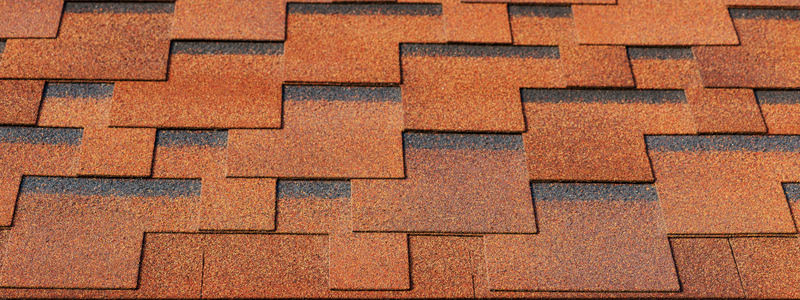
B&M Roofing and Residential Roofing
B&M Roofing has extensive experience in residential and commercial roofing, with a Colorado company providing quality service throughout the Centennial State since 1947.
The premier Colorado commercial roofing contractor uses only the highest quality roofing shingle suppliers: GAF and Owens Corning. We offer a wide range of colors and styles to choose from, ensuring that we can match the right roof shingle color to any home’s style.
We work with brands like GAF and Owens Corning to offer you a variety of roofing materials and colors to choose from and allow you to find the perfect color for your home. B&M is always available to help give your home’s roof the beauty it deserves.
Roofing Companies Denver
There are different roofing companies in Denver, Colorado, and B&M Roofing is one of the industry leaders. These roofing companies render different services, ranging from commercial to residential. So, irrespective of your roofing needs, a roofing company in Denver, Colorado, can cater to your needs.
But what exactly can you expect from these roofing companies in Denver? Is it important to hire one? And who are the top roofers in Denver? This article answers these questions and more.
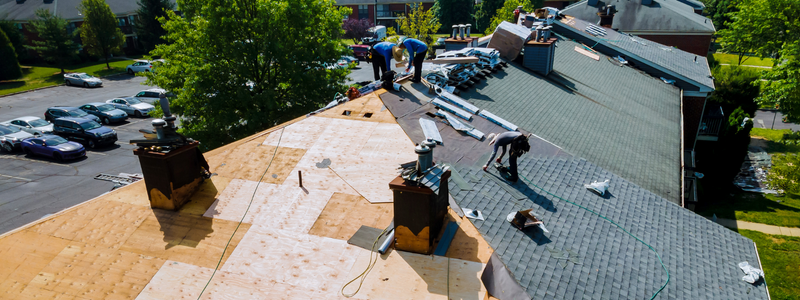
What Do Roofing Companies Do in Colorado?
Before discussing what roofing companies do in Colorado, it is essential to explain the different types of roofers there are in Denver, Colorado.
- Commercial Roofers: Commercial roofing services focuses on installing or replacing flat roofs and other industrial applications. They focus primarily on commercial construction and sometimes carry out residential projects.
- Residential Roofers: As the name implies, residential roofing services focus on personal homes. Residential roofers work on shingle and metal roof installation, maintenance, repair, and replacement.
- Industrial Roofers: Industrial roofing services deal with maintaining and repairing industrial roofs. Industrial roofers focus on metal roofs and industrial applications.
- Roofing Contractors: This refers to roofers who work on commercial and residential buildings. If you need a general contractor, it is best to go with roofing contractors in Denver, as they have experience in both roofing types. Also, roofing contractors act as a one-stop shop for all your roofing needs.
Now, what do these roofing companies in Colorado do?
Roof Installation
Roof installation is quite common, and it involves putting a new roof on your house or business structure. Installing a new roof takes time and requires the expertise of seasoned roofers. So, carefully choose the roofing company to handle this project.
Roof Repair
Roof repair is another common service rendered by roofing companies in Denver. However, unlike roof installation, the focus here is on fixing any damaged part of your roof. For this to happen, the roofing contractor will assess the damage and tell you what repair the roof needs.
Roof Replacement
Replacement is different from repair. Here, you might have to haul an entire section rather than fix a damaged part of the roof. This makes roof replacement a job for the experts, so hire a reputable roofing company.
Removal of Waste and Cleaning of Debris
Most roofing companies offer waste removal and cleaning of debris on the rooftop as part of their services. This service is particularly sought after a heavy storm or other acts of nature damage the rooftop.
Emergency Services
Colorado is no stranger to storms like hail, tornados, snow storms, etc., and it causes severe damage to rooftops. You can contact a roofing contractor that renders emergency services in such instances. These services are available all week long for 24 hours.
Why Is It Important to Hire a Roofing Company in Denver?
Aside from using top-notch roofing materials when roofing your home, the roofing contractor you work with ensures you get a well-installed roof. To this end, it is prudent to work with a local roofing company in Denver. The following are several reasons why you should choose a local roofer:
- You can verify their licenses and references, as local businesses thrive on referrals.
- Local roofing companies in Denver know local building codes that must be met. Therefore, there are fewer avenues for issues with non-compliance, which might delay your roofing project.
- Working with local roofers gives you access to quick and prompt service delivery. Also, you can contact them easily or visit their office if there’s an issue with the roof.
- You get easy access to emergency services in case of storms or serious accidents that impact your roof.
- You get better-personalized service as local Denver roofers dedicate their time to their customers, something roofing companies outside the may be unable to offer.
Do Commercial Roofers Need to be Licensed in Denver?
Yes. Generally, Colorado classifies roofing contractors — including commercial roofers — as general contractors. As such, they are not required to carry a special state license. However, they must have a business license, which shows that the company has been active for a minimum of two years.
A roofing company must have a valid and current business license to obtain a permit for an extensive project. In addition to the preceding, they must carry a Class D-Roof Covering and Waterproofing license. If the roofing project involves significant structural work, the roofing contractor needs a Class A or Class B General Contractor License.
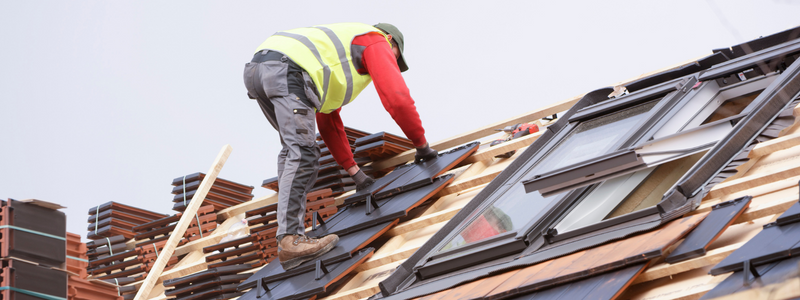
How to Select the Best Roofing Company in Denver
Just because a roofing company is one of the best in Denver does not mean they are the right fit for you. So how do you select the best roofing company for your needs?
Here are some helpful tips:
- Research the company online and check past client reviews
- Speak to your neighbors and ask them the company that handles their roofing job
- Visit the company’s website to familiarize yourself with their services
- Find out the company’s years and level of experience
- Compare prices with other roofing companies in Denver
- Interview the roofing company and stay objective
- Check to see if the company has a free estimate system
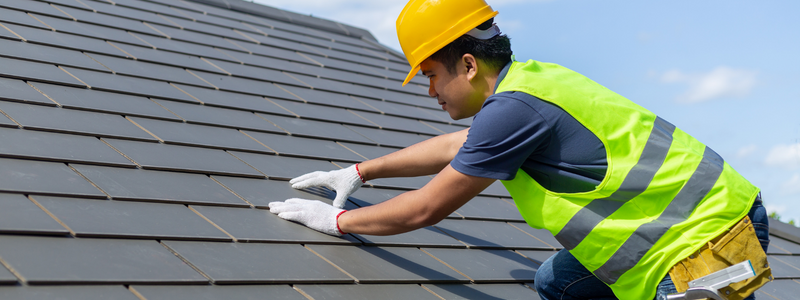
Trust B&M Roofing With Your Roofing Needs
At B&M Roofing, we are committed to rendering top-notch services to all our residential and commercial clients. We are available all year, whether you need repairs, installations, or replacements. So, request a free estimate today!
